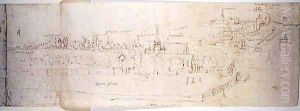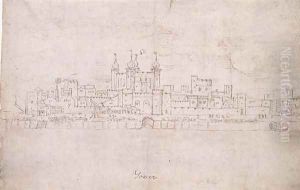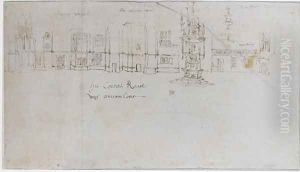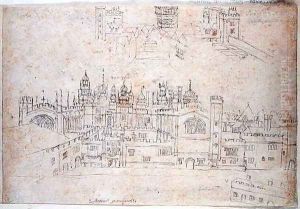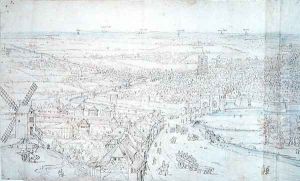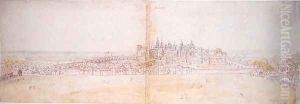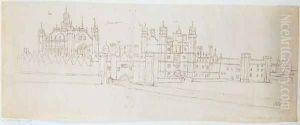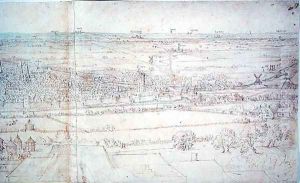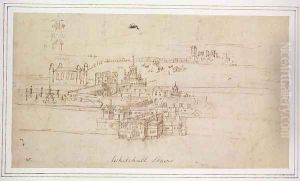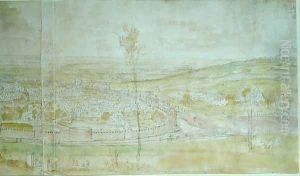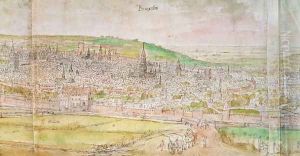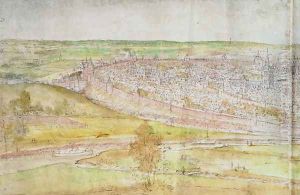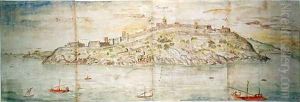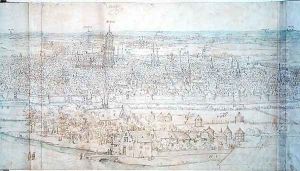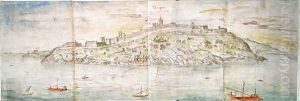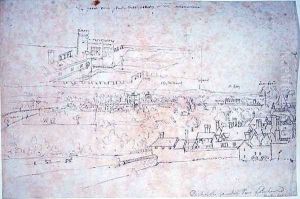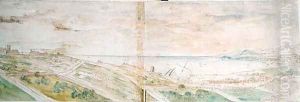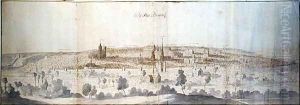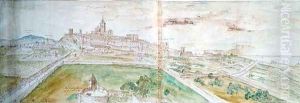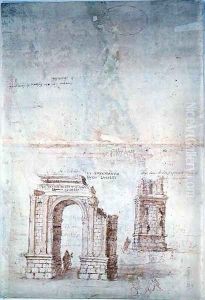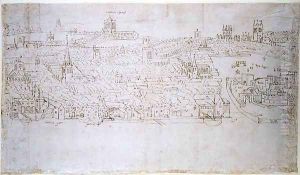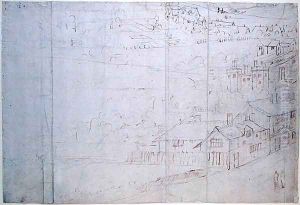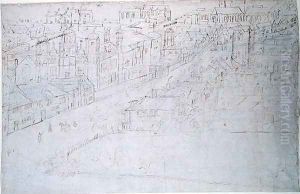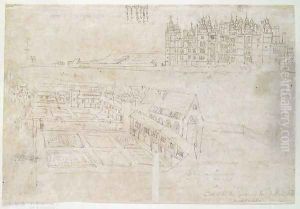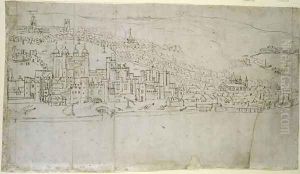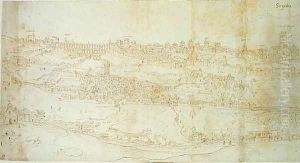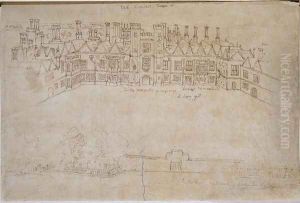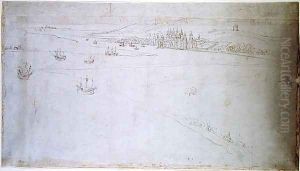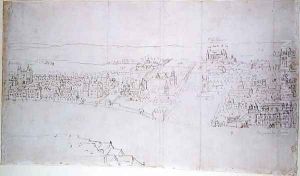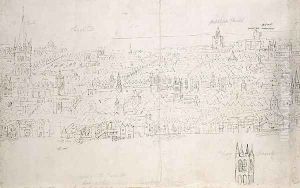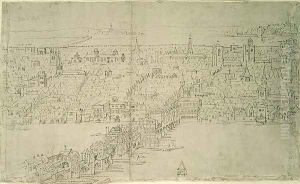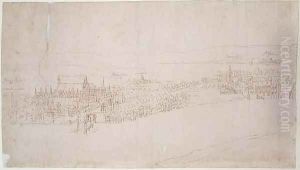Anthonis van den Wyngaerde Paintings
Anthonis van den Wyngaerde was a Flemish topographic artist who became famous for his panoramic views and detailed landscape drawings of cities and towns in the 16th century. Born in Antwerp around 1525, he was part of a family of artists and was likely trained in the art of drawing and painting from a young age. His career as an artist began in his hometown, but his work soon caught the attention of patrons beyond the borders of the Netherlands.
Van den Wyngaerde is especially renowned for his cityscapes, which serve as valuable historical records of urban architecture during his lifetime. His panoramas are characterized by their meticulous detail and accuracy, which have made them precious resources for historians studying the period. He was employed by Philip II of Spain, and much of his work was done to document the lands and holdings of the Habsburg Empire.
Throughout his career, Van den Wyngaerde traveled extensively across Europe, from Spain to the territories in the Low Countries, creating over 250 drawings and sketches. These works not only depicted the architectural features of the cities but also captured the bustling life within them, providing insights into the daily activities and social conditions of the time.
Anthonis van den Wyngaerde's influence was significant during his lifetime, and his works continued to be appreciated for their historical value and artistic merit. He died in Spain in 1571, leaving behind a legacy of art that offers a window into the urban landscapes of 16th-century Europe. His drawings have been preserved in various collections, including the British Museum, the Biblioteca Nacional de España, and the Ashmolean Museum in Oxford.

